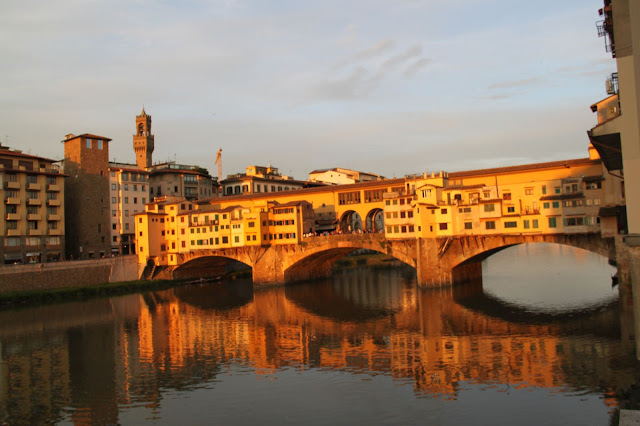Food plays an important role in Florentine life, whether in the shops...
..... or in the markets, where some more bizarre items can be found.
You can use a very detailled dictionary to identify the products below - they may not be to everyones taste.
Of course the dish for which Florence is well known is the Bistecca alla Fiorentina...
....which are large steaks from the Chianina breed. If you like a kilo of excellent beef on your plate, Florence is the place to go. It should be cooked, briefly, over hot wood!
Wine also features in the main market stalls as is clearly shown on one of the walls.
Another market scene - one could, perhaps, rightfully call it the "covered market" - although this is where they sell tourist objects, many of which appear to be labelled "Made in Florence" after arrival from far eastern sources.
To return to the more traditional shops, this is a fantastic place to get picture frames, but they are not always stored conveniently by size.
There was even one shop we found that combined the sale of picture frames with that of used bicycles - apologies for the poor picture.
Woodwork is to be found in alleyways all over the city, whether in these full or near full-size wooden versions....
..or in the multiple different forms that Pinocchio can take. Pinocchio was the creation of the Florentine political satirist, Carlo Lorenzini, who wrote the story under the pen-name of Carlo Collodi.
Antique stores abound although those on the Via Maggio require a rather large spending budget. There was one near where we were staying that seemed to specialise in death!
Florence is perhaps best known for its goldsmiths' stores on the Ponte Vecchio.
Some of these goldsmiths' stores have some exquisite jewelry, whilst other just seem to pile everything into the window.
In fine weather and at peak times, it is often almost impossible to walk on the bridge because of the crowds looking in the windows.
Cosimo I de' Medici caused this problem because he ordered the replacement of the butchers who have traditionally had stalls there with goldsmiths.
He could not stand the smell of rotting meat that used to prevail so when he had a Corridor built for him by Vasari to go back and forth from the Palazzo Vecchio to the Pitti Palace (almost 1 km long), he ordered the butchers out and had them replaced by goldsmiths - perhaps an early example of urban renewal. Part of the corridor can been seen below, going over the gold stores and going around an obstacle in its way.
Some of these goldsmiths' stores have some exquisite jewelry, whilst other just seem to pile everything into the window.
In fine weather and at peak times, it is often almost impossible to walk on the bridge because of the crowds looking in the windows.
Cosimo I de' Medici caused this problem because he ordered the replacement of the butchers who have traditionally had stalls there with goldsmiths.
He could not stand the smell of rotting meat that used to prevail so when he had a Corridor built for him by Vasari to go back and forth from the Palazzo Vecchio to the Pitti Palace (almost 1 km long), he ordered the butchers out and had them replaced by goldsmiths - perhaps an early example of urban renewal. Part of the corridor can been seen below, going over the gold stores and going around an obstacle in its way.
This obstacle is the Mannelli tower. It was built by the Mannelli family in the twelfth century and the family had sufficient prestige that they could refuse the 1565 demand of the upstart Medici (who only arrived on the scene in the fourteenth century) that it be demolished to make way for his corridor. A compromise was reached and Cosimo had to have Vasari build the corridor around the tower.
Looking through one of the goldsmiths' stores, one can see where we stayed on the banks of the Arno.























No comments:
Post a Comment